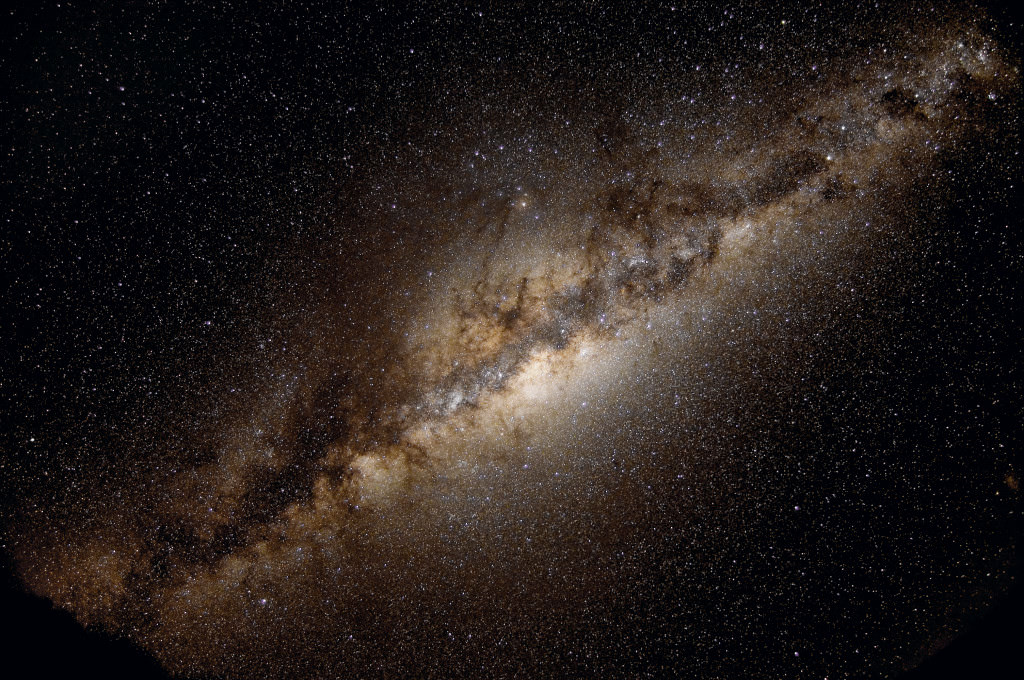[/caption]
The structure of the Universe and the formation of stars from concentrated dust leads them to be clumped into galaxies of all sorts. But adrift between the galaxies may be billions of undiscovered lonely stars. These escaped stars, thrown out of their homes by gravitational interactions, may number in the billions for the Milky Way galaxy alone, and would provide details of historic galactic formations and mergers.
The theory that escaped and wandering stars exist isn’t new, and ejected stars from other galaxies have already been observed (see Hyperfast Star Ejected from the Large Magellanic Cloud). Our Milky Way formed as the result of many mergers with smaller dwarf galaxies, and as a result of these gravitational train wrecks, billions of stars could have been thrown out of the system, breaking free of their gravitational bonds to wander between the galaxies forever.
Wandering stars – those that have loosely bound orbits around a galaxy – and escaped stars that have left the galaxy altogether could be discovered in the near future by the Large Synoptic Survey Telescope, planned for development in Chile, and Pan-STARRS. In the December 10 issue of Astrophysical Journal Letters, a team of astronomers led by Michael Shara of the American Museum of Natural History explores the provenance of these drifters, and estimates the lower limit of their numbers to be 0.05% of the Milky Way galaxy’s stellar population. That places their numbers well in the billions.
Red giant stars and classical novae have been detected outside the Milky Way, but only in clusters. Finding the individual escaped stars would be a challenge because of how dim they would appear. Because of the mechanism that ejects them from the Milky Way, many would be older and redder, having formed when the galaxy was much younger. But the phenomenon of novae and supernovae would allow upcoming large scale sky surveys to pick up the few that exploded.
Building up a database of these intergalactic novae and supernovae would give astronomers better information on their orbital characteristics, which in turn would allow for improved modeling of how the Milky Way formed: knowing where the stars are now and what their velocity is gives information as to where they were in the past. Research into older, high-velocity stars that travel back into the Milky Way is ongoing, and would supplement the figure for how many of these galactic jailbreakers exist.
Source: Arxiv, nod to Scientific American


In galaxy collisions these orphaned stars get a lot of kinetic energy and the net system loses energy. It may have a sort of virial theorem result to it.
LC
I was born under a wandrin’ star
I was born under a wandrin’ star
Wheels are made for rolling, mules are made to pack
I’ve never seen a sight that didn’t look better looking back
I was born under a wandrin’ star
Life can make you prisoner and the plains can bake you dry
Snow can burn your eyes, but only people make you cry
Home is made for coming from, for dreams of going to
Which with any luck will never come true
I was born under a wandrin’ star
I was born under a wandrin’ star
Do I know where hell is, hell is in hello
Heaven is goodbye forever, its time for me to go
I was born under a wandrin’ star
A wandrin’ wandrin’ star
(Life can make you prisoner and the plains can bake you dry)
(Snow can burn your eyes, but only people make you cry)
(Home is made for coming from, for dreams of going to)
(Which with any luck will never come true)
(I was born under a wandrin’ star)
(I was born under a wandrin’ star)
When I get to heaven, tie me to a tree
For I’ll begin to roam and soon you’ll know where I will be
I was born under a wandrin’ star
A wandrin’ wandrin’ star…